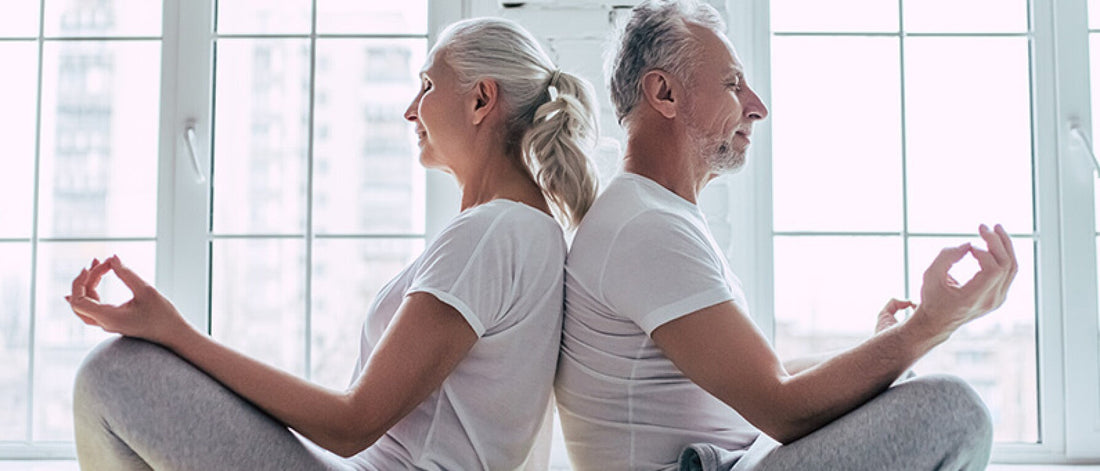Despite appearances, the act of meditation is more than simply sitting in silence for a period of time. It is the beginning of a journey into the inner depths of your heart and mind. It is through the exploration of these depths where we tap into our true desires and develop an understanding of who we are and what unique talents and gifts we can bring to the world. Though, at some point in one’s meditation journey we may ask the question, "What meditation style is really best for me?"
Meditation has the potential to offer some wondrous benefits, but it can be overwhelming to choose a style. Thanks to its popularity, there are many options to choose from and the internet has a lot to say about the topic. If you’re curious, the best thing to do is to start trying different ones. You will notice some people are comfortable with one meditation style and others like to experiment with different ones, and that’s perfectly fine. It’s important to find one that suits you and supports where you’re at in life.
There isn’t a meditation that works better than another. They all offer their own unique benefits and each person’s experience varies as well. Depending on what’s going on in life, sometimes you may need more guidance to help focus or maybe you just want to feel happier. It’s helpful to get in the habit of noticing your rhythms and how you are doing mentally, physically, and spiritually, and then making adjustments. These adjustments can be as big as quitting a job that is unfulfilling or as small as saying thank you more often. Meditation helps you to know what it is you need to do to enrich your life.
Benefits
Benefits:
Benefits
Stop what you’re doing.
Take a breath and pause.
Observe what is happening in your mind, body, and external environment. Notice any default behaviors such as anger, fear, etc.
Proceed mindfully.
Benefits
The practice of a breathing meditation can help you bring your focus back into the present moment so that you can make more conscious decisions. The benefits are often felt immediately as the mind-body connection becomes established. As the mind calms, so does the body and vice versa. A breathing meditation or practice can help you to understand and appreciate how you can influence your own physical and mental well-being.
Benefits
A breathing practice that can be very calming is called Nadi Shodhana. You can perform this anywhere and anytime you begin to feel some stress. In general, it’s helpful to start with a breathing practice before going into your regular meditation.
Use this as a guide to help you choose a style of meditation you might like to try. There are many branches of meditation styles out there, but the few mentioned here are good gateways into exploring this important daily practice. Keep it simple and have fun with this process! You will know when you have found a style that resonates with you.
Embark on the path to self-mastery with Deepak Chopra and Roger Gabriel in our Primordial Sound Meditation Online Course. Learn More.
Meditation has the potential to offer some wondrous benefits, but it can be overwhelming to choose a style. Thanks to its popularity, there are many options to choose from and the internet has a lot to say about the topic. If you’re curious, the best thing to do is to start trying different ones. You will notice some people are comfortable with one meditation style and others like to experiment with different ones, and that’s perfectly fine. It’s important to find one that suits you and supports where you’re at in life.
The Gifts of Meditation
As human beings, we are in constant flux, as is everything around us. Like the ebb and flow of ocean tides, you may go through periods where you might need to make some adjustments to get back into “the flow” of your own rhythm. One of the greatest gifts of meditation is learning how to be flexible, and this becomes especially important when it comes to your meditation practice. Choosing a meditation style should be stress free, though it can be discouraging if you aren’t feeling the results you are expecting. Another important lesson of meditation is the concept of letting go of expectations.There isn’t a meditation that works better than another. They all offer their own unique benefits and each person’s experience varies as well. Depending on what’s going on in life, sometimes you may need more guidance to help focus or maybe you just want to feel happier. It’s helpful to get in the habit of noticing your rhythms and how you are doing mentally, physically, and spiritually, and then making adjustments. These adjustments can be as big as quitting a job that is unfulfilling or as small as saying thank you more often. Meditation helps you to know what it is you need to do to enrich your life.
Meditation Self-Assessment
First, it’s important to first check-in with yourself and do a quick assessment. Feel free to jot down your responses.- What do you feel is lacking in your life?
- How does your body feel? Are there any places where it feels heavy or stuck?
- Do you have a lot on your mind, more than usual?
- Do you need help focusing?
- How do you want to feel? Nourished, connected, energized, purposeful, etc.
1. Guided Meditation
Guided meditations are great for when you would like to be led through an experience. These can be done by going to an in-person class, listening to a recording, or following any kind of verbal instruction. This style sometimes requires some imagination that comes natural to some people. If you’re not one of those people, just do your best and play “pretend.” You will still receive the same benefit. The topic or theme of the guided meditation can be related to physical well-being, manifesting, abundance, etc.Benefits
- Helps with physical, mental, and emotional challenges
- Helps beginners who need some extra guidance
- Helps active minds that need some help focusing
- Helps to gain clarity on areas of “stuckness”
2. Loving-Kindness Meditation
If you want to start changing your perception of the world, Loving-Kindness Meditation can begin to help make this shift. It uses words, images, and feelings, to invoke qualities of love and friendliness toward yourself and others. In recent years, research on this particular type of meditation has shown a range of benefits from improving general well-being to providing relief from illness and increasing social connectedness.Benefits:
- Increases self-love
- Enhances relationships with others
- Increases social connections
- Aids with physical healing
- Improves mental well-being
3. Mindfulness Meditation
Meditation encompasses a wide range of practices, including eating, walking, observing the world, and even the more familiar method of sitting in stillness. Mindfulness is one such meditation practice that can be life changing. With its roots steeped in the Buddhist tradition, mindfulness is an ongoing life practice that helps you to accept all that arises without judgement. It addresses what is going on in the moment and works to release it right away. You cultivate the practice of surrendering and placing attention on that which helps you grow and evolve in a positive direction. In the words of spiritual leader and Buddhist monk, Thich Nhat Hanh: “Mindfulness helps you to go home to the present. And every time you go there and recognize a condition of happiness that you have, happiness comes.”Benefits
- Helps to refocus attention
- Decreases stress response
- Helps shift toward a positive mood
- Enhances self-awareness
- Improves health and well-being
Stop what you’re doing.
Take a breath and pause.
Observe what is happening in your mind, body, and external environment. Notice any default behaviors such as anger, fear, etc.
Proceed mindfully.
4. Mantra Meditation
This is a common and beloved meditation practice that tends to be more structured. The word “mantra” means vehicle or instrument of the mind and can be used in different ways. Mantras can be sounds, words, or phrases and are often silently repeated for the duration of a meditation, helping keep the mind focused and serving as a vehicle to reach higher states of consciousness. Some mantras are meant to have meaning and others are used for their sounds or vibrations and purposefully have no meaning.Benefits
- Satisfies a need for structure
- Focuses the wandering mind
- Reduces stress
- Improves mental and physical health
- Helps to gain clarity into your true desires
5. Breathing
You may tend to spend a lot of time thinking about the past or the future while ignoring the most important moment: “the now” or “the present.” You don’t have control over changing the past or future, but you do have control over the present. What you do today affects tomorrow.The practice of a breathing meditation can help you bring your focus back into the present moment so that you can make more conscious decisions. The benefits are often felt immediately as the mind-body connection becomes established. As the mind calms, so does the body and vice versa. A breathing meditation or practice can help you to understand and appreciate how you can influence your own physical and mental well-being.
Benefits
- Reduces stress immediately
- Helps to ground
- Clears and centers the mind
- Revitalizes the body
- Improves physical well-being
A breathing practice that can be very calming is called Nadi Shodhana. You can perform this anywhere and anytime you begin to feel some stress. In general, it’s helpful to start with a breathing practice before going into your regular meditation.
Use this as a guide to help you choose a style of meditation you might like to try. There are many branches of meditation styles out there, but the few mentioned here are good gateways into exploring this important daily practice. Keep it simple and have fun with this process! You will know when you have found a style that resonates with you.
Embark on the path to self-mastery with Deepak Chopra and Roger Gabriel in our Primordial Sound Meditation Online Course. Learn More.






















